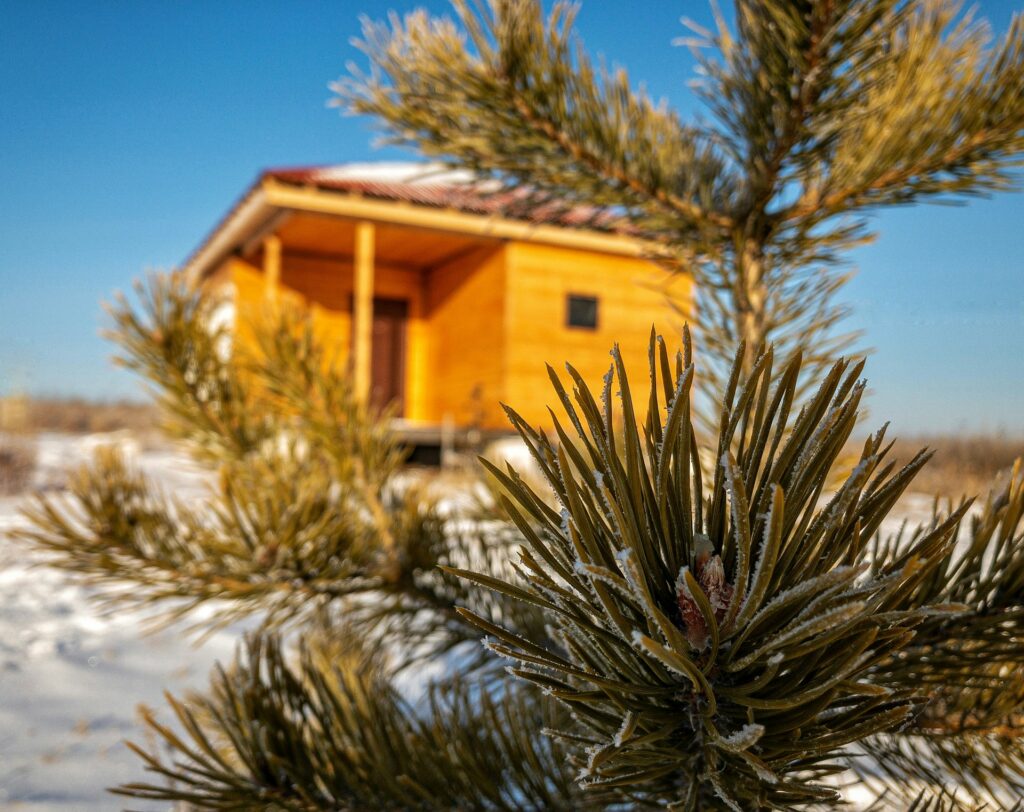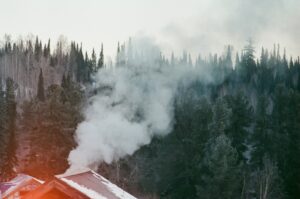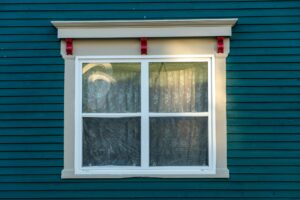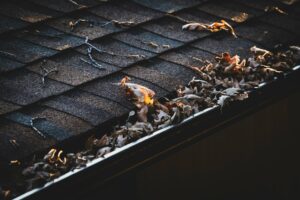Bend’s high desert climate can be surprisingly tough on home exteriors. With intense UV exposure, significant temperature shifts overnight, and low humidity, your siding endures a relentless barrage of challenges year-round. When you pair these conditions with winter’s freeze-thaw cycles, it’s clear why selecting durable materials and performing timely maintenance are crucial. Fall offers the perfect window to ensure your home’s siding is ready for the colder months and the dramatic temperature swings typical of Central Oregon.
Below, we explore how to prepare your siding for a smooth transition into winter. You’ll find practical strategies for spotting issues, preventing moisture damage, and selecting the right materials for Bend’s unique conditions. By taking these steps now, you can avoid costly repairs and extend the life of your siding for years to come.
Understanding Bend’s High Desert Climate
Bend’s climate presents a tricky combination of strong sunlight, wide day-to-night temperature fluctuations, and consistently low humidity. Homes in this region frequently face:
• Intense UV Radiation. High altitude and sunny skies can cause siding materials to fade, crack, or warp more quickly than in milder environments.
• Low Humidity. Dry conditions lead to materials shrinking or becoming brittle, elevating the risk of gaps and cracks.
• Freeze-Thaw Cycles. Even minor moisture trapped in or behind siding can freeze, expand, and thaw repeatedly, causing structural issues and weakening exterior walls.
These elements create an environment where ordinary maintenance schedules might fall short. A proactive approach to inspection, repair, and specialized siding materials helps homeowners manage these unique stressors.
Why Fall Is the Ideal Time for Siding Inspection
Fall is crisply cool and relatively dry in Bend, conditions that are perfect both for detailed inspections and for potential repairs or replacements. Here’s why this season typically works so well:
• Moderate Weather. Late summer heat can stress some siding materials, while winter conditions can make outdoor work challenging. Fall’s mild temperatures simplify repair tasks and painting or sealing.
• Clear Visibility. With leaves falling and vegetation thinning out, you can see your siding more clearly. It’s easier to identify damage, cracks, or gaps that might have been hidden by thicker foliage.
• Timing Before Winter. Fixing issues before harsh winter conditions arrive helps prevent moisture buildup. You’ll avoid freeze-thaw cracking and other winter-related complications when your siding is well-prepared.
Whether you suspect damage or you’re simply scheduling routine maintenance, late September through November continues to be a prime window to address siding concerns in Central Oregon. Consider pairing your siding check with other seasonal tasks like roof and gutter inspections for a complete winter-preparation plan.
Siding Materials Suited for Bend
The right siding choice can make a world of difference in how well your home weathers Central Oregon’s climate. Thanks to advancements in technology, the market features a variety of siding materials that strike a balance between resilience and aesthetics.
- Fiber Cement. Often touted as one of the best solutions for winter siding protection, fiber cement siding in Central Oregon stands out for its durability against UV rays and temperature fluctuations. It resists rot, fire, and pests, making it a robust option for homeowners looking for long-term value.
- Engineered Wood. This material pairs the look and feel of traditional wood with enhanced resistance to warping and moisture intrusion. Engineered wood siding is typically treated to ward off fungal decay and insect infestation, making it suitable for the Bend climate.
- Vinyl. Vinyl siding remains a popular choice for its relative affordability and minimal maintenance. Modern manufacturing adds UV-protection technology that reduces fading. However, extra care or perhaps additional insulation can be beneficial for withstanding severe temperature swings.
Bend siding installation often involves a combination of these materials, depending on the aesthetic, budget, and performance priorities. Homes that emphasize curb appeal, energy efficiency, or minimal upkeep will each have unique siding solutions that fit best. For detailed information on siding materials and their performance, Consumer Reports offers comprehensive guides on exterior home improvements.
Common Siding Vulnerabilities
No matter your choice of siding, a few trouble spots deserve regular attention. High desert conditions and seasonal weather can accelerate common roofing and siding challenges:
• Cracks and Gaps. Temperature fluctuations cause contracting and expanding in siding materials, which can form gaps over time. Even small openings may become gateways for moisture intrusion and pests.
• Warping. Sunlight, combined with low humidity, may warp or buckle certain materials if they lack a proper protective coating or ventilation. Warping compromises both curb appeal and structural integrity.
• Fading and Discoloration. UV exposure can bleach paint or siding finishes. While this is often cosmetic, it can also indicate compromised protective coatings.
• Mold and Mildew. Central Oregon is relatively dry, yet moisture buildup can occur on shaded walls. Trapped moisture, especially when freeze-thaw cycles begin, can lead to mold or mildew spreading into deeper layers of the siding or even your home’s interior.
Keeping an eye on these typical trouble spots helps you detect issues early. Prompt attention to vulnerabilities often spells the difference between a minor repair and a costly, time-consuming replacement project.
Freeze-Thaw Protection
Moisture that infiltrates even tiny cracks can freeze and expand, gradually wearing down your siding. To contain freeze-thaw damage, focus on eliminating places where water can collect or seep in.
• Seal Cracks and Gaps. Check corners, around windows and doors, and at seams where siding panels meet. High-quality caulking or weatherproof sealants can keep moisture out before it turns into damaging ice.
• Maintain Proper Drainage. Ensure that gutters and downspouts are cleared to channel water away from siding. Clogged gutters can cause water to spill or seep onto wall surfaces, exacerbating freeze issues.
• Timely Repairs. If you spot areas where siding panels appear loose or nails have worked their way out, schedule immediate repairs. These small fixes close the door on moisture intrusion just in time for winter.
By proactively sealing and maintaining your siding, you reduce freeze-thaw cycles’ potential to cause cracks, splits, and long-term damage to your home’s exterior walls.
Paint and Seal Maintenance
Paint or sealing products protect your siding from UV rays, moisture, and everyday wear and tear. In Bend’s climate, painting or sealing in the fall has several advantages:
• Ideal Conditions for Application. Paint and sealants often perform best within a specific temperature range. Fall’s moderate temperatures help them adhere and dry evenly.
• Quick-Drying in Low Humidity. Dry weather conditions in Bend mean paint cures faster, letting you complete the project efficiently.
• Seasonal Inspection Opportunity. Painting or sealing showcases any structural issues, like warped boards or loose nails, otherwise hidden beneath the old coat. You can correct these before they grow problematic.
In addition, consider repainting, staining, or re-sealing wood trims around windows and doors, as these areas also face exposure to weather. Partnering with local experts like HOMEMASTERS can help ensure each step, from surface prep to final coat, is done accurately.
Snow Load Considerations
Although Bend’s snowfall varies from one winter to the next, snow load can be a concern for certain architectural styles, particularly homes with flatter roofs or exposed exterior walls. In heavy snow years, accumulation near the siding base or roof edge creates heightened risks:
• Weight on walls and siding joints. Snow sitting against your home can place pressure on specific siding elements, affecting alignment and leading to cracks or moisture pockets once snow melts.
• Freeze-Melt Cycles. When piles of snow rest against your siding, often in shady areas, repeated freeze-thaw cycles are more likely, degrading materials more quickly than a conventional freeze-thaw event.
• Potential Water Intrusion. As snow melts in the warmer afternoon sun, it channels water along your siding. Repeated exposures increase the chance of seepage, especially when siding is older or unsealed.
Regularly clearing snow away from the base of your home and ensuring roof drainage is fully functional make a difference in preventing long-term siding damage.
Siding Materials Comparison Table
Below is a quick overview of how popular siding materials fare against Bend’s high desert conditions. This summary focuses on durability, maintenance, cost, and lifespan to help you make an informed decision:
| Siding Material | Durability in High Desert | Maintenance Level | Approximate Cost (per sq. ft.) | Typical Lifespan |
|---|---|---|---|---|
| Fiber Cement | Excellent UV & moisture resistance; minimal warping | Moderate (repainting every 10–15 years) | $6 – $10 | 30–50 years |
| Engineered Wood | Resistant to warping & pests; strong in temperature swings | Moderate (may need painting or sealing) | $5 – $9 | 25–40 years |
| Vinyl | Good basic protection; susceptible to warping if low-quality | Low (occasional cleaning) | $3 – $7 | 20–30 years |
While costs and maintenance schedules vary, each of these materials has its benefits for winter siding protection. Fiber cement siding in Central Oregon is a clear favorite among many homeowners who prioritize longevity and resistance to local weather patterns.
Frequently Asked Questions
- Why is fiber cement siding ideal for Bend’s high desert climate? Fiber cement siding is engineered to handle severe shifts in temperature, intense sunlight, and low humidity. It resists cracks, rot, and fading, making it a strong candidate for winter siding protection and year-round performance in Bend.
- Is fall always the best time for siding installation in Bend? Fall’s mild weather and lower chance of sudden storms make it one of the best times to inspect, repair, or replace siding. However, spring installations also work, especially if you missed your window in autumn, just be sure to keep an eye on variable temperatures and occasional spring snow.
- How can I tell if my siding has freeze-thaw damage? Look for small cracks, paint bubbling, or warped panels. If the siding appears to bulge outward or you notice chipped or peeling paint near the base, these could be indicators that moisture has expanded and contracted within the siding layers.
- What is the typical lifespan of siding in Bend’s climate? This depends heavily on the material. Vinyl generally lasts 20 to 30 years, engineered wood can last 25 to 40, and fiber cement often endures closer to 30 to 50 years. Routine cleaning, painting, and re-sealing extend the lifespan of any siding product.
Conclusion
Preparing your siding for winter in Bend requires strategic timing, the right materials, and a dash of extra diligence. By tackling inspections and repairs in the fall, you harness the mild weather and dry conditions to prime your siding for the months ahead. This approach directly combats the high desert’s challenges, intense UV, abrupt temperature swings, and low humidity, while ensuring freeze-thaw cycles and snow loads remain non-issues.
Durable materials like fiber cement, engineered wood, and vinyl each provide tailored benefits in Central Oregon. By combining a thorough inspection, attentive freeze-thaw prevention, and regular paint or seal maintenance, you create a first line of defense against moisture intrusion and structural damage. A clear set of action steps in place means you’ll watch your home’s exterior stand strong for years to come.If you’re still weighing your siding options or need professional support, consider reaching out to HOMEMASTERS for expert Bend siding installation or repairs. Our team has years of experience with fiber cement siding in Central Oregon and can help you formulate a plan that fits your home, budget, and design preferences. By investing in quality materials and routine maintenance today, you set yourself up for a worry-free winter, and a home that looks and performs its best all year long.




